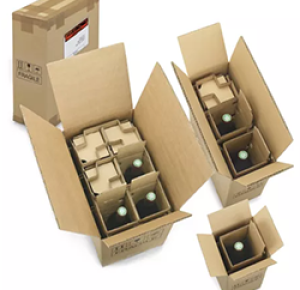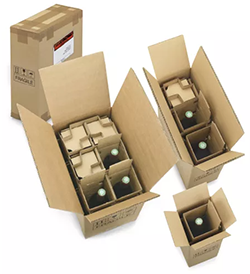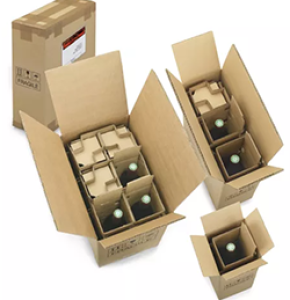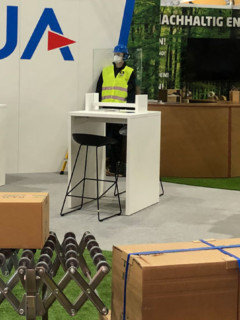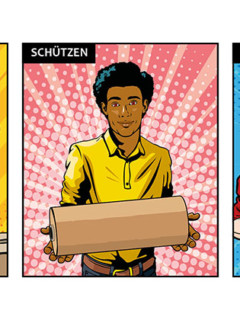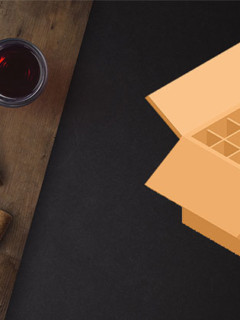Once again, convincing proof of what a “welded team” can achieve: AVC, our supplier of welding equipment, is celebrating its 30th anniversary this year. A team of now 25 people has been manufacturing film sealing and shrinking equipment since 1986. In the middle of Holland, in Almere-Haven, the freshly founded company sold the first welding equipment to animal feed dealers directly from the truck. Today, the range and distribution channels are a little more complex, but not more complicated! We had the current models shown to us and were impressed: If used correctly and with regular replacement of wearing parts, an AVC welder is almost impossible to break! This is also reflected in the fact that the unit with serial number #6 is still in operation – and still sealing pet food…
During a site visit to RAJA, we had the common variants presented to us. We have summarised the respective differences and advantages, the machine’s inner workings and the most common errors in use here.
What happens during welding?
Welding is a method of joining two layers of film, for example, so tightly and permanently that they cannot be separated without damage. In packaging, this technique is often used when, for example, the opening of a bag needs to be sealed or when producing large areas of film.
How does a sealer work?
In principle, a film sealing device works with heat generated by electricity. The current is passed through the welding wire. Depending on the resistance of the material, the components in the sealing arm heat up. High-quality devices therefore have a small copper plate at both ends of the wire. Copper conducts electricity extremely easily and therefore hardly heats up, whereas the welding wire made of aluminium offers the current an extremely high resistance – and therefore heats up strongly. The resulting heat “melts” the foil together – and the bag or foil is already closed or joined at this point. The copper plates ensure easy removal of the film without “tearing” it away.
A good weld requires heat, time and pressure.
This is also called plastification of the plastic. Simply put, the surface of the two films to be joined is “softened” by heat (it becomes plastic, i.e. malleable). The two plastic layers fuse together at specific points under heat and pressure. When they cool down, a permanent bond is created.
The success of the weld depends on the correct interaction of temperature, force and time. First of all, it is essential to reach the ideal temperature for the material to be welded. If the temperature is too low, no or no resilient weld seam is produced. If it is too high, however, the structure of the plastic will be permanently destroyed.
Indispensable pulse generator
It is therefore practical if the welding temperature, welding force (manual or mechanical) and welding time can be set in advance on the pulse generator. The recommended cooling time is also automatically maintained, because if the films to be joined are separated too early, the joint is not yet stable. The various factors are therefore automatically adjusted to each other so that the weld seam has the highest possible durability.
Which welding machine has which advantages?
What are the differences between tabletop weld ers and magnetic welders?
Basically: If used correctly, the two versions do not differ in the quality of the weld seam, the expected service life and the output per working day. The difference, in brief: The operation of the slightly cheaper table welding unit is more susceptible to application errors. With the tabletop sealer, the sealing arm is closed manually after inserting the film – and pressed down for the duration of the sealing process. When the light goes out, the sealing process is finished – but not the cooling time! And this is, besides the decreasing pressure after the hundredth sealing process, already the most frequent source of error: If the welding arm is lifted directly after welding without cooling time and the film is removed, the weld seam is not ideal.
And what is a magnetic welder?
With a magnetic welding device (SMS), on the other hand, the welding arm is lowered with slight pressure and can then be released. The unit itself regulates the welding and cooling time (based on the previously made setting on the controller) and automatically raises after the complete process is finished. Here, therefore, a constant welding result can be expected even with the hundredth welding process, as the machine works with the optimum pressure and the optimum welding or cooling time every time.
Do I need a foot switch?
It is incredibly practical, especially when larger bags are to be sealed. While both hands are free to fix the bag on the sealing seam and thus slipping is hardly possible, the sealing arm can be operated quite comfortably thanks to the foot pedal.
Impulse sealers – an impulse in the right direction
Whereas in older generation units the welding wire emitted heat continuously, so-called contact or impulse welders only generate heat when the two welding arms are pressed together, thus creating contact. This not only considerably reduces the risk of injury (when open, the welding seam can be touched without risk of burns!), it is also much more efficient (current only flows when it is actually needed for the welding process and at the same time protects the wearing parts of the welding device). Another advantage is that there is no need for a lead time of sometimes several minutes, during which the unit has to heat up before welding.
PE film welding
Due to their properties, polyethylene films are excellently suited for processing with welding equipment. The material is tough and elastic, does not become brittle even at temperatures down to -50°C and is therefore considered very cold-resistant. The material can also cope well with high heat: The limit value for PE-LD* is between 70 and 80 °C, for PE-HD* even over 100 °C. The required welding temperature is correspondingly high: 120 to 135 °C for PE-LD, and even a little higher for PE-HD.
Sealing heavy bags
Due to its high tear resistance and also its insensitivity to most chemical substances, PE film is often used for particularly large-volume goods as well as especially heavy goods such as building materials. Here, the impulse hand sealer SuperPoly scores in several ways: The welding wires in both the lower and upper part of the sealing tongs allow films of up to 2 x 300µ to be joined. And the almost 5 metre long cable allows the mountain to come to the prophet and not the other way round:
You don’t have to lift the heavy bag onto the packing table but can weld quite comfortably on the spot.
Durability of a weld
A good weld is almost “indestructible”. If the welding process was carried out under optimal conditions, the weld seam is stronger than the base material. The material is more likely to crack right next to the weld if it is overstressed. Why?
The heat exposure has changed the molecular structure at this point, weakening the material at this point.
*PE-LD: Low density polyethylene, also known as LDPE.
*PE-DH: High density polyethylene, also known as HDPE.











